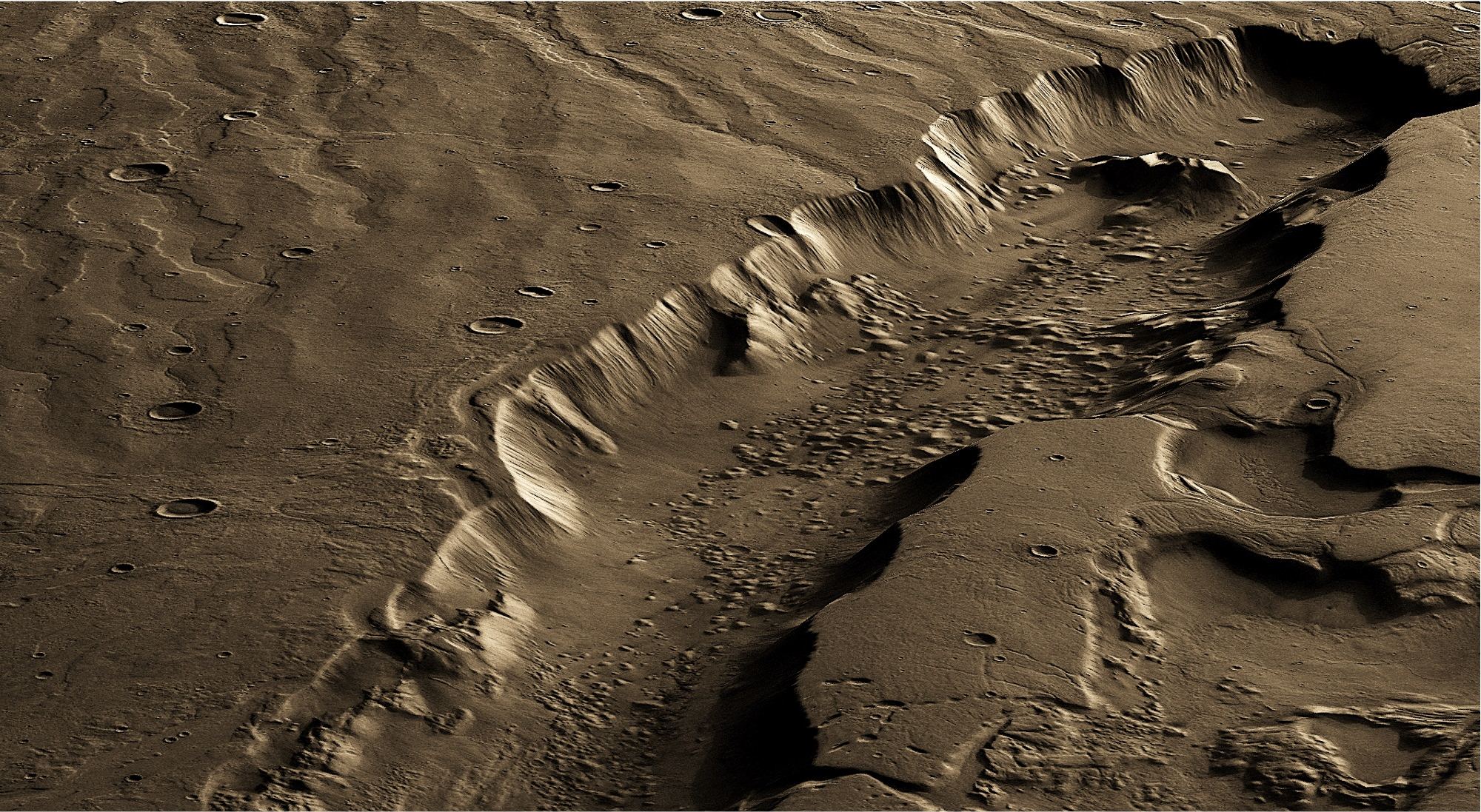For decades, robotic missions have been exploring Mars to learn more about the planet’s geological and environmental history. Next year, the Perseverance rover will join in the hunt and be the first mission to send samples back to Earth and by the 2030s, the first crewed mission is expected to take place. All of these efforts are part of an ongoing effort to find evidence of past (and maybe even present) life on Mars.
According to a new study from Rutgers University-New Brunswick., the most likely place to find this evidence is located several kilometers beneath the surface. It is here (they argue) that water still exists in liquid form, which is likely the result of geothermal heating melting thick subsurface sheets of ice. This research could help resolve lingering questions like the faint young Sun paradox.
The study, which was recently published in the journal Science Advances, was led by Lujendra Ojha, an assistant professor with the Department of Earth and Planetary Sciences at Rutgers University. He was joined by a team of engineers and planetary scientists from Dartmouth College (Hannover, NH), Louisiana State University (Baton Rouge, LA), and the Planetary Science Institute (PSI) in Tuscon, Arizona.

One of the most enduring questions about Mars was how it could have maintained temperatures warm enough to have liquid water on its surface. During the Noachian era (ca. 4.1 billion to 3.7 billion years ago), the Sun was much fainter and cooler than it is today. However, there are countless geological indicators on Mars that indicate the presence of rivers, lakes, and even an ocean across its Northern Lowlands that are dated to this period.
This apparent contradiction, between the geological record and climate models, is something scientists refer to as the “Faint Young Sun Paradox.” As Prof. Ojha explained in a Rutgers Today press release:
“Even if greenhouse gases like carbon dioxide and water vapor are pumped into the early Martian atmosphere in computer simulations, climate models still struggle to support a long-term warm and wet Mars. I and my co-authors propose that the faint young sun paradox may be reconciled, at least partly, if Mars had high geothermal heat in its past.”
One possible mechanism is the heat generated by the radioactive decay of elements like uranium, thorium, and potassium. On terrestrial planets like Earth, Mars, Venus, and Mercury, these elements generate enough heat in the interior to keep the mantle in a viscous state. They can also cause the undersides of thick ice sheets to experience melting, leading to the formation of subglacial lakes.

On Earth, this phenomenon is believed to be what led to the formation of lakes beneath the Western Antarctic ice sheet, Greenland, and the Canadian Arctic. It’s likely that similar melting could explain the presence of liquid water on Mars 4 billion years ago, at a time when the surface temperatures would have been freezing.
To verify this theory, the Rutgers team examined various Mars datasets to see if geothermal heating would have been possible in the Noachian era. What they found was that these conditions would have been commonplace across the surface of Mars roughly 4 billion years ago. As the planet lost its magnetosphere and slowly saw its atmosphere stripped away, dropping temperatures likely meant that liquid water was only stable at great depths.
Therefore, if life had ever emerged on Mars, it would have likely followed the liquid water as it percolated down into the subsurface. At these levels, said Ojha, conditions would have been warm enough for life to persist:\
“At such depths, life could have been sustained by hydrothermal (heating) activity and rock-water reactions. So, the subsurface may represent the longest-lived habitable environment on Mars.”
These findings support an ongoing theory among planetary scientists and astrobiologists who are currently engaged in the search for life on Mars. Ever since the Mariner 9 orbiter provided the first direct evidence of past water on the Red Planet – which has confirmed many times since – scientists began to speculate where this water (and any life it supported) could be found today.
In 2018, NASA’s Interior Exploration using Seismic Investigations, Geodesy and Heat Transport (InSight) lander reached the surface and began studying Mars’ interior structure. The data it accumulates could allow scientists to better understand the role geothermal heating had on the habitability of Mars during the Noachian Era. It could also point the way towards life on Mars today!
Further Reading: Rutgers Today


Maybe SpaceX could team up with the boring company to drill really deep and make some bricks for radiation shielding of structures on the surface?